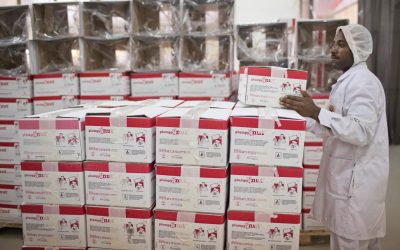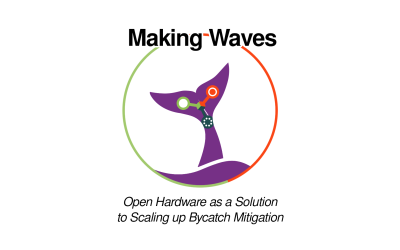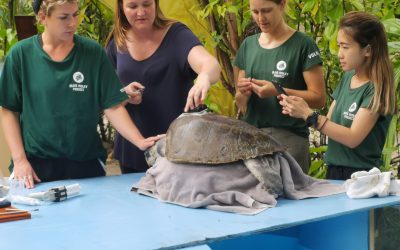Prior to my Fellowship, I embarked on a unique project to dramatically reduce the cost of tagging green sea turtles. The objective was to acquire spatial and behavioural data using open source principles and technologies.


5 tags were deployed, and two weeks later, the first nesting female green sea turtle we had tagged returned with GPS and accelerometer dataWe were thrilled to see that our beta enclosure and electrical payload, comprised of a GPS (Global Positioning System) and tri-axial accelerometer, survived its maiden ocean journey. Our so called “pit stop” tag (designed so researchers could replace tags on the beach without having to replace the epoxy resin that attaches the tag to the turtle’s shell) was a success – however, we knew that this would just be the beginning of our endevour. The question now is – what’s next? The answer is fast(er) GPS acquisition. Commerically, a Fastlok™ GPS by Wildtrack Telemetry Systems Ltd is the best-in-show answer to aquiring accurate GPS data in less than a few seconds by collecting raw pseudo random code from GPS satellites and then processing it onboard the device. The location can then be relayed via Argos (low earth orbit satellites) and the location of the tagged animal revealed.
Could we develop an open GPS platform for use by any tag manufactuer to aquire GPS locations as quickly as possible, yet still lower the cost of entry?Accessible data on the movement and behaviour of sea turtles is valuable for researchers wanting to understand how they can better monitor and conserve green sea turtles globally, so we are currently exploring the complete uBlox range of GPS modules and looking at how we can optimise the tag for optimal GPS aquisitions at sea.



i would like to get more information about the mechanical equipment, shown above. how to fix and release quick? very interessted. thx
Hi Gerhard,
The enclosure design we’re currently using can be found here https://github.com/IRNAS/PitStop1/tree/master/testing.
The GPS board is being tested at the moment with our partners and we’ll release the designs for this next.
We use a baseplate method and an epoxy solution together with fibreglass to fix the base plate to the turtle’s carapace. The tag is then attached using a single screw to fix it in place. This allows the researchers to remove it and replace it with another tag without needing to re-apply epoxy, and to minimise disturbing the turtle.